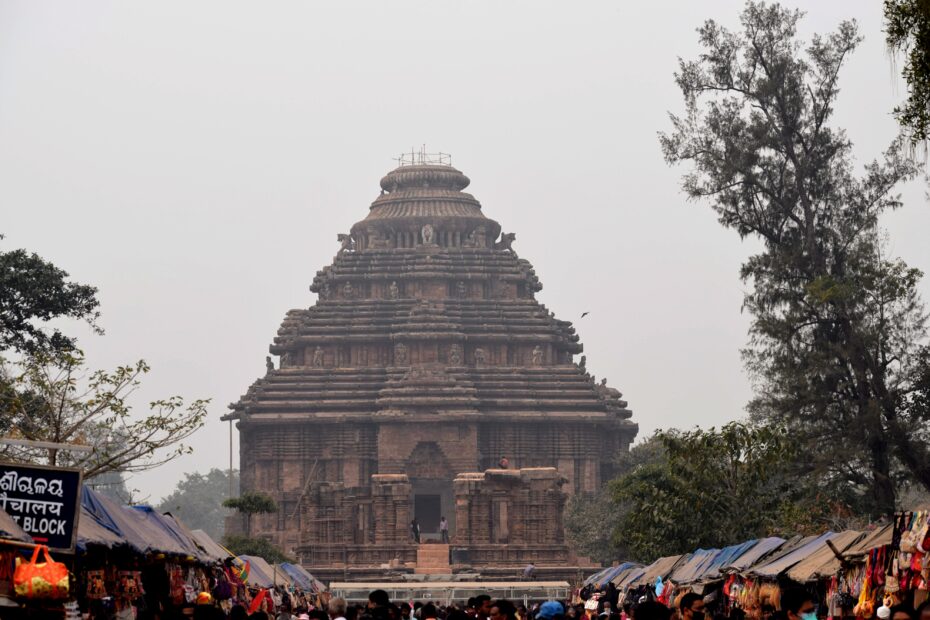There is one reason to visit the town of Konark, in the Indian state of Odisha – the great Konark Temple which is a monumental representation of a chariot of The Sun God. It is one of the three famous stone chariot temples in India, the other two being in Hampi and Mahabalipuram in the Indian states of Karnataka and Tamil Nadu respectively. The Konark Temple is perhaps one of the most popular tourist destinations in Odisha. It is located about 65 kms from Bhubaneswar and 35 kms from Puri.
History
The Konark temple dates to 1250 AD. The temple was built by King Narasimhadeva – I from the Eastern Ganga Dynasty to commemorate his political and military supremacy on the neighbouring states. The temple was dedicated to the Sun God and reflected the grandeur of Kalinga Architecture. Historians believe that an old temple existed near the site which was reconstructed to build this giant temple using blocks of granite and sandstone. Extensive use of iron clamps was done to hold the stone blocks together.
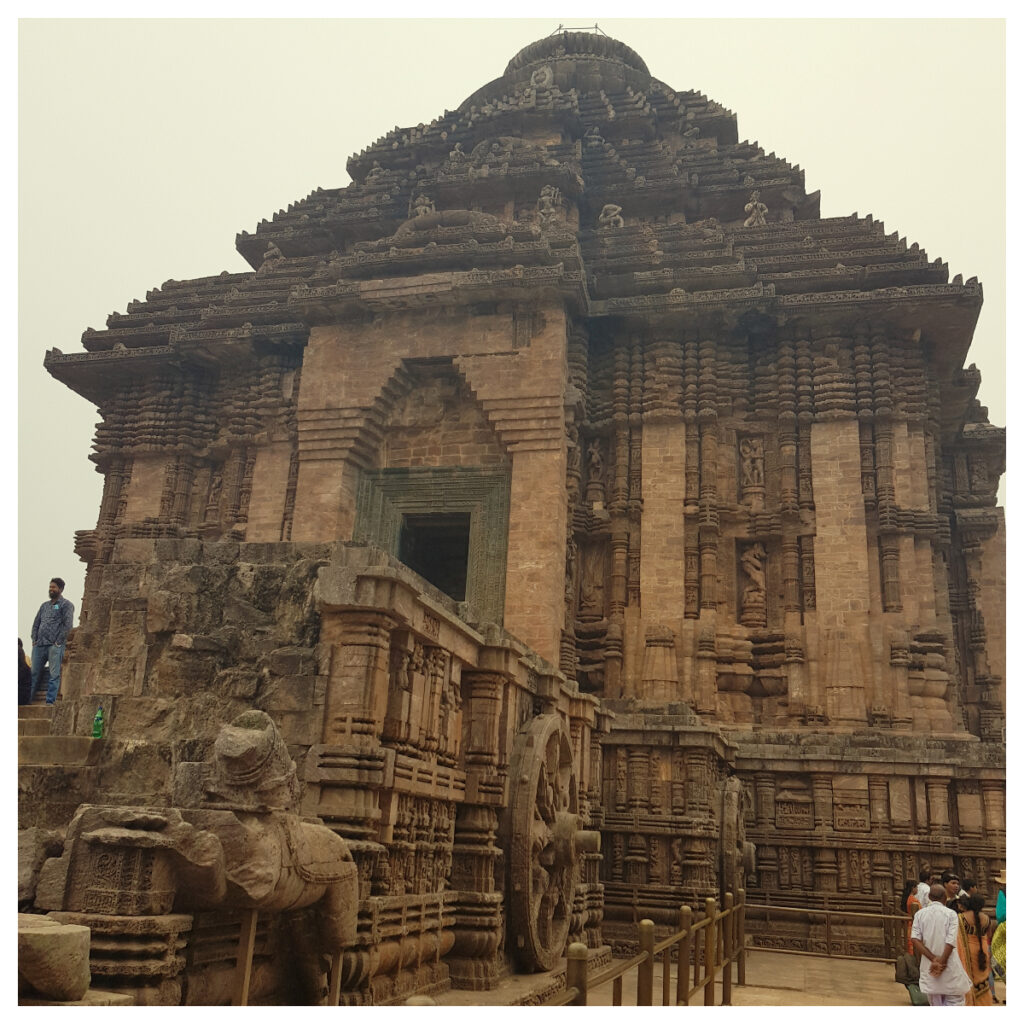
There are many legends associated with the temple. According to Odisha folklore, the workers involved in the construction, could not fix the temple crown even after making several attempts. This infuriated the king and he gave all the workers including the chief architect, one final chance to complete the activity failing which their execution became imminent. To save his father and the workers, the chief architect’s twelve-year-old son, Dharmapad, secretly climbed the top of the temple and successfully set the crown. However, after completing the work, he jumped into the adjacent sea. It is believed that he sacrificed his life for saving the workers from execution and preventing the story from spreading. There are many hymns and poems written in Odia literature in praise of Dharmapad. However, the ancient manuscripts related to the Konark Temple does not have any mention of Dharmapad or his sacrifice.
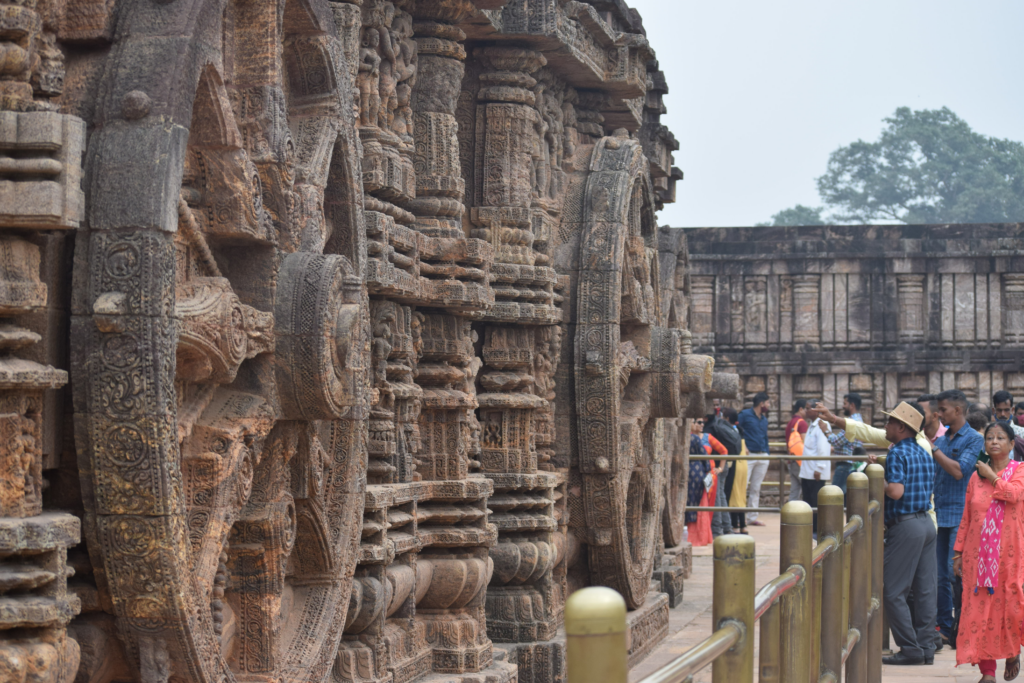
The Konark temple rose to great prominence after its construction. It remained an active place of worship till the middle of 16th century. However, during this period, the temple was subjected to many cyclonic storms and frequent raids by many foreign invaders. The extensive damage caused by the natural calamities and the raids led to the destruction of the temple. The constant threats from foreign invaders, made the locals to move the idols from Konark temple and place them in the Jaganath Temple at Puri.
There are many legends associated with the collapse of the Konark Temple too. One such account mentions that the destruction of the temple was triggered after the removal of a large powerful magnet atop the temple by Portuguese maritime sailors as it caused interference in their navigational compass. The magnet was supposedly placed on the top of the temple to hold the structure together along with the iron clamps. Its removal led to the disintegration of the blocks. However, it is interesting to note that magnets were discovered only in the 17th-century. Hence the legend of using a magnet in this 13th-century temple does not seem to be true.
Interesting Fact : The Konark Temple is also known as “Black Pagoda” due to its dark colour. The ancient maritime sailors used to refer the temple as a navigational landmark while sailing through the eastern coastline of The Bay of Bengal.
Architecture
The Sun Temple depicts the rich intricacies of Kalinga Architecture. The temple represents a chariot with 24 wheels driven by 7 horses. There are many interpretations of the Konark temple’s architecture. One interpretation is the 24 wheels represent the 24 hours in a day. And the 7 horses correspond to the 7 days of a week. Each wheel has 8 main spokes which represent the 8 intervals or Praharas of a day. The south, north, and west walls of the temple have images of the Sun God representing the rising Sun, mid-day Sun, and the setting Sun.
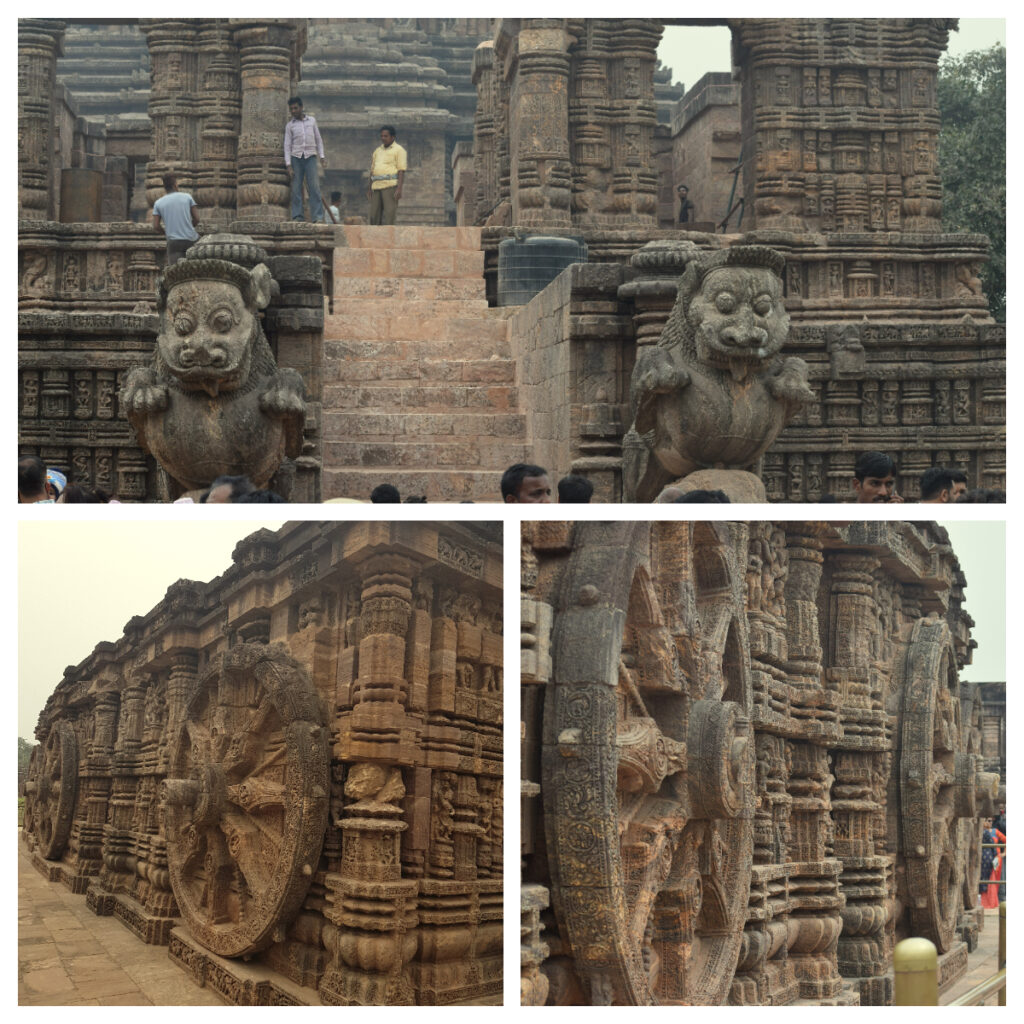
The temple originally had three main sections – the Natya Mandap (Dance Hall), the Prarthana Mandap or Jagmohan (Worship Hall) and the Garba Griha (Main Sanctum). It is widely believed that the construction of the temple was done is such a way that the first rays of Sun used to fall on the Sun God idol kept inside the Main Sanctum. Currently, the visitors can only see the remnants of the Natya Mandap and the Prarthana Mandap. The temple complex has many other sculptures carved out of big blocks of granite stone. One such sculpture is that of a galloping horse trampling a fallen soldier. There are also sculptures of lions guarding the temples entrances as well as flanking the northern and southern sides of the temple. Lifestyle statues of women playing musical instruments like flute, manjira, drum and veena can also be seen on the walls of the temples.
The Archaeological Survey of India declared the temple as protected monument in the year 1939. UNESCO declared it as a world heritage site in the year 1984.
Interesting Fact : The symbol of the galloping horse trampling a fallen soldier serves as the official emblem of the Government of Odisha.
Things To See
Though in its ruins, yet the temple complex has many prominent attractions. Those are:
- The Konark Temple – The tourists can only see the remnants of what was once a glorious temple.
- The ASI museum – It houses the artifacts excavated from the temple site. The museum also houses an auditorium that exhibits the history of Konark Temple at regular intervals for the tourists.
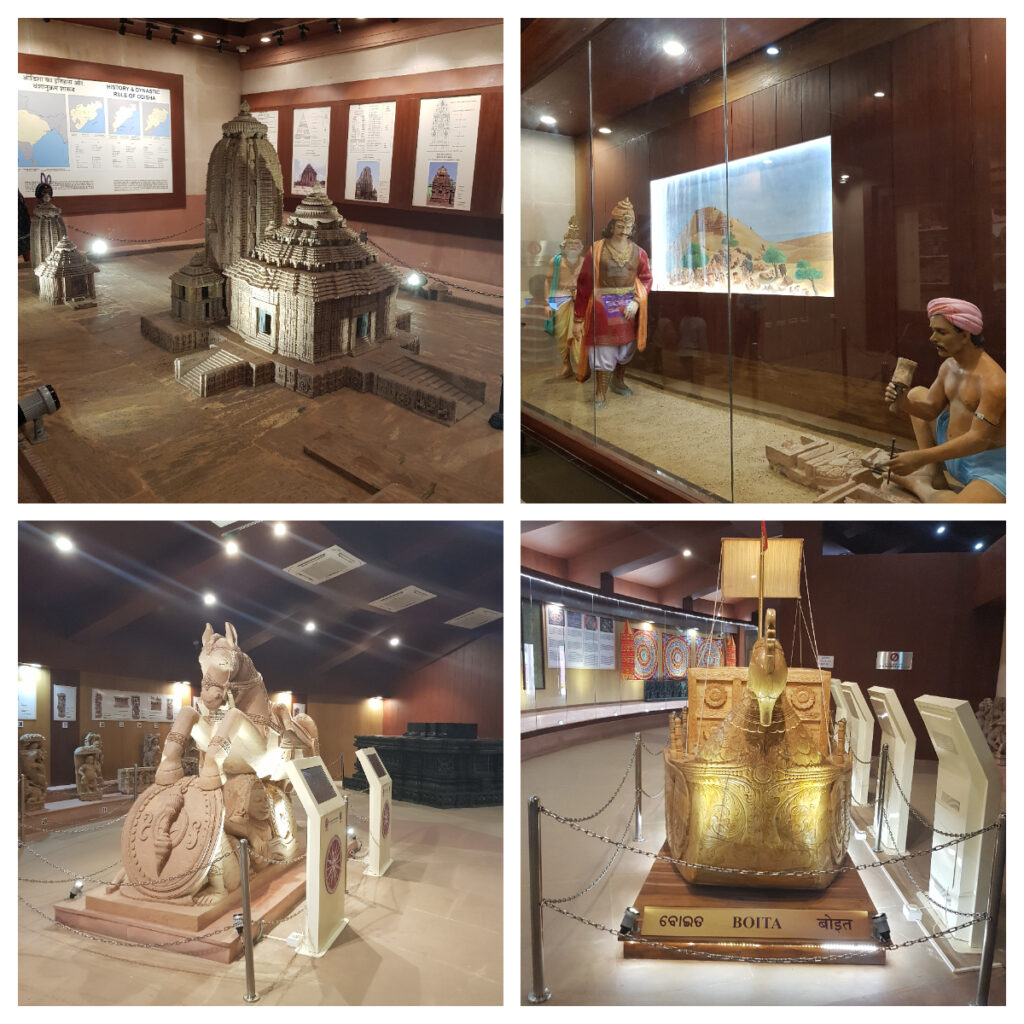
- The Light and Sound Show – It opens for tourists within the temple complex every evening. The show depicts the historical significance of the Konark Temple through a combination of Light and Sound. It is usually a 40 minute show and the narration is available in English, Hindi and Odia languages.
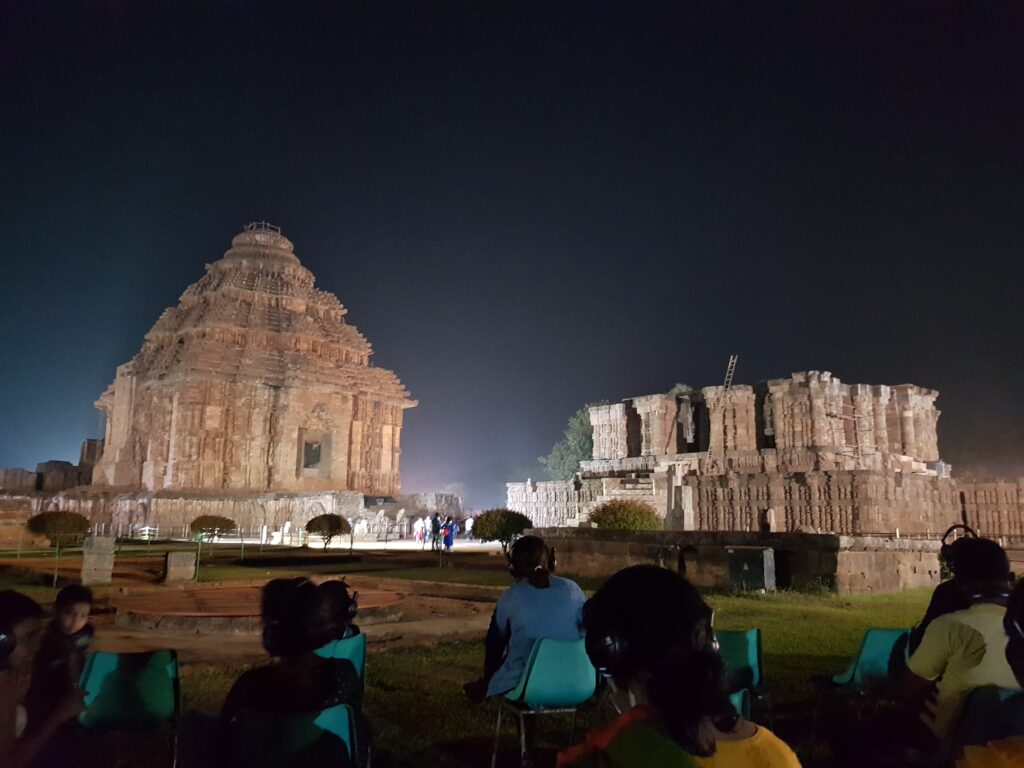
- The Shopping Complex – There are shops on both sides of the approach road to the temple selling souvenirs, caps, toys, and idols. Tourists can also find Pipli’s famous applique work items and the traditional Patta Chitra paintings in these shops.
- The Konark Dance Festival – The Odissi Dance Research Centre, conducts this festival in the first week of December every year within the temple complex. It spans over a period of 5 days. Artists comprising of musicians and classical dancers from far and wide participate in the event.
- International Sand Art Festival – The timing of this event normally coincides with the Konark Dance Festival event. The Chandrabhaga beach which is around 5 kms from the Konark Temple, serves as the venue for the Sand Art festival. Sand artists from many countries participate in the event displaying a plethora of designs and sculptures carved in sand.
Where To Stay
When it comes to accommodation, Konark has limited options.
- Tourists looking to stay in Konark can opt for the Lotus Eco Beach Resort. It is around 8 kms from the Konark Temple.
- For a detailed review of the Lotus Eco Beach Resort, you can check the post : Lotus Eco Beach Resort – A Bucolic Retreat In Konark
- For bookings in the Lotus Eco Beach Resort, you can visit the official site of the resort Booking & Reservations
Another good option is the Odisha Tourism’s Eco Retreat Resort located just next to the Lotus Eco Beach Resort.
For bookings in the Eco Retreat Resort, you can visit the official site of the resort Eco Retreat Bookings
- Alternatively, tourists can opt to stay in Puri which is around 35 kms from Konark. A lot of decent options for accommodation can be found there.
Tips
- During summer, the weather tends to become considerably hot and humid. It may not be the best time to visit Konark. The ideal time to visit is during the winter season.
- Konark is a quaint town and the people are very friendly. They mainly converse in Hindi, Bengali, and Odia languages. Though people understand English, yet very few can converse in it.
- The tour of the temple should be done with the help of a guide so that visitors can get accurate information about the history of the temple and its various sections.
- As with all tourists’ places, one can find touts near the Konark Temple too who pose as temple guides. It is advisable for the tourists to avail licensed guides from the tourist office.
- The temple authorities conduct the Light and Sound show in the evenings. Tourists can purchase tickets for the show from the tourism office. Mosquitoes can be a nuisance for the audience attending the Light and Sound show. Hence it is advisable to apply some mosquito repellent cream on the exposed skin to ward off the mosquito menace.
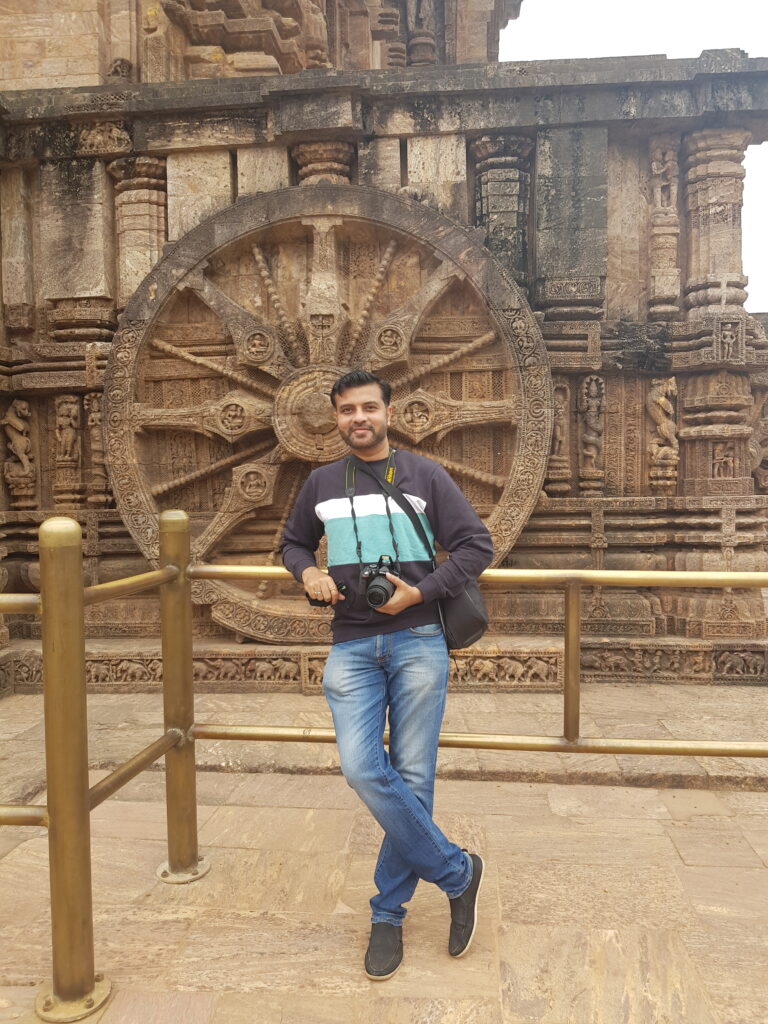
For more posts on travel, please check our Wander Lust section
For posts on gardening, please check our Garden Venation section
